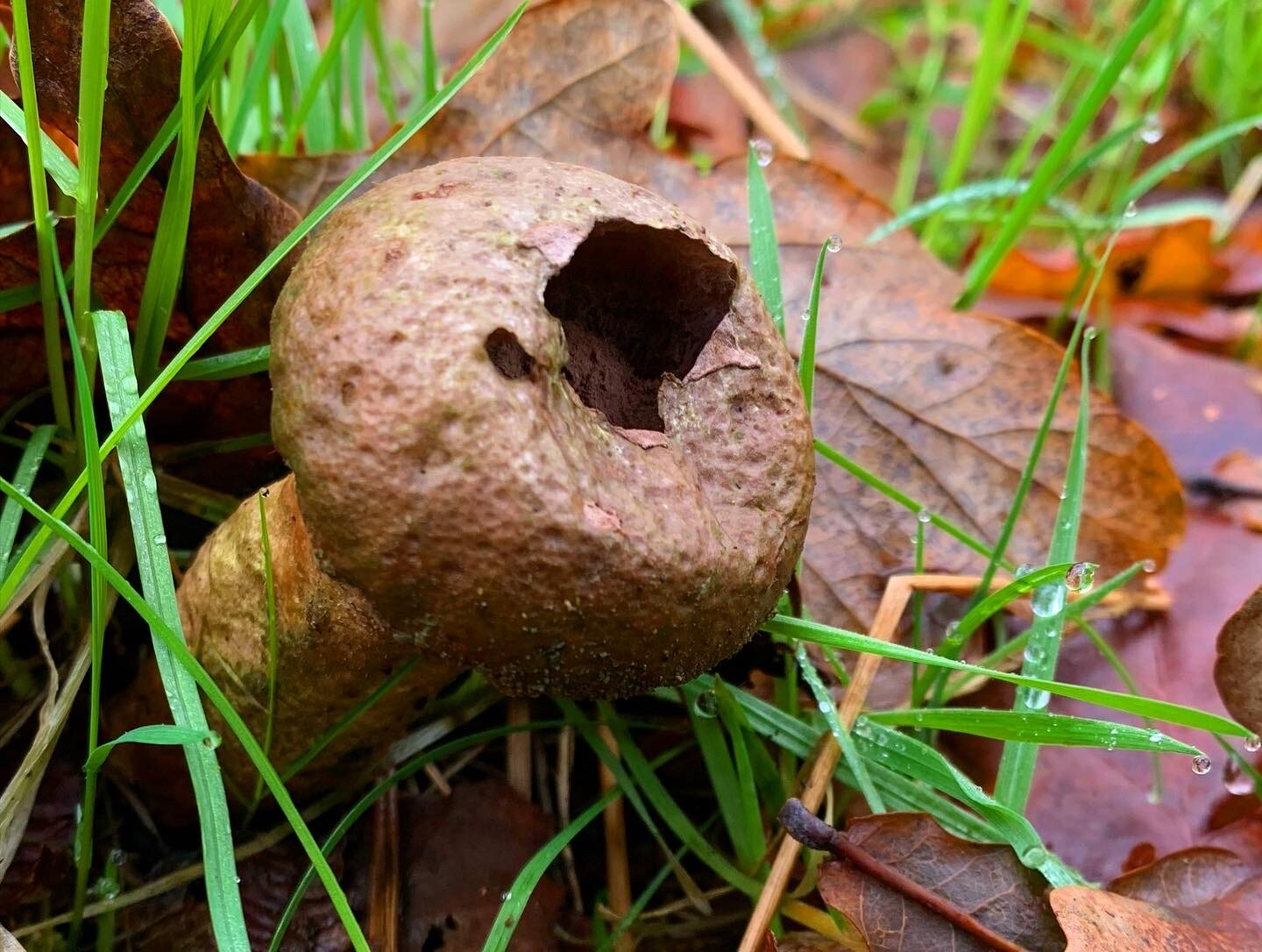Autumn Treasures: The Fascinating World of Fungi
Image: Rosy Fox
When asked to picture a perfect autumn, it’s likely visions of digging out your cosiest sweater, and ordering pumpkin spiced lattes by the dozen to plaster all over your Instagram feed will spring to mind.
You can almost feel the crisp autumn air nipping playfully at your exposed cheeks, with the sweet symphony of freshly fallen leaves crunching underfoot echoing in your ears to signal the changing of seasons to all forest-dwellers. As the final remnants of summer bid us a fond farewell, the equinox is greeted with a burst of auburn and amber confetti, and the natural world is saturated in glorious sepia tones.
But, the most charming of autumn treasures are hidden amongst the smattering of leaf litter blanketing the forest floor: fungi surfacing from their summer slumber, peering through the russet carpet with eager eyes. With approximately 15,000 fungal species of varying shapes, sizes, and vibrant colourways dotted across the UK, fungi undoubtedly top the list of things to watch out for this autumn.
In a taxonomic kingdom of their own (quite literally, the Fungi Kingdom), ‘fungi’ is formally defined as “organisms that get their food from decaying material or other living things”, and is an umbrella term encompassing the whacky and the wonderful: from putrid mould to the mushrooms we love to throw into our Friday-night lasagne.
Image: Rosy Fox
Fungi are the “fruiting bodies” of mushrooms, reproducing via teeny-tiny spores. Fungal spores are dispersed similarly to plant seeds; insects, wind, rain, and other animals all aid in the germination of new colonies to perform essential eco-services. Unbeknownst to most of society, wild species of fungi play a pivotal role in maintaining healthy, balanced ecosystems – credit to which is often given to flora and fauna. Commonly found taking up residence in the nooks and crannies of the forest, but also inhabiting the most hostile natural environments, fungi dynamically decompose discarded debris and recycle rotting organic matter. The process of decomposition emits vital elemental nutrients, such as phosphorous and nitrogen, making them accessible to other living beings so they can continue to thrive.
Several species of fungi form mutualistic, symbiotic relationships with surrounding trees and plants, meaning all organisms benefit from ecological interactions with one another. Also known as ‘mycorrhiza’ fungi, they grow in unison with tree and plant root systems, extracting sugars in exchange for essential nutrients collected from the earth by fungal strands called ‘hyphae’. This mutual trade-off between plant and fungi kingdom creates a unified network of life forms; in true Lion King-style, the circle of life exists, with fungi orchestrating the entire show.
If you venture into the woods this autumn, keep your peepers peeled for these four electrifying species of ‘shrooms:
Fly Agaric (Amanita muscaria)
Instantly recognisable, the fly agaric is the epitome of autumn. Pearlescent white, wart-like blemishes adorn a bright crimson cap; this tantalising toadstool adds a dash of magic to enchanted forests throughout the UK and is enshrined in mystical folklore, featuring in a myriad of childhood fairy tales. Infamous for their toxic tendencies, Fly Agarics are poisonous to humans, yet are a favoured delicacy among red squirrels and banana slugs (to name a few) who relish feasting on this fungus. Fly Agarics can be found in wooded and heathland areas, concealed amongst birch and pine.
Image: Mark Crisp
Common Puffball (Lycoperdon perlatum)
The Common Puffball is a firm favourite among fungi-foragers, often found nestled amongst decaying foliage in woodlands. The beige, spherical body sits atop a clubbed stem which anchors the magical mushroom to the Earth, with minuscule growths coating the external layer. When mature, a small opening appears on top of the mushroom, where its spores are spewed out like smoke from a gelatinous chimney.
Image: Rosy Fox
Common Ink Cap (Coprinopsis atramentaria)
Grooved, grey, and gilled - the Common Ink Cap can be found standing tall upon areas of deadwood. This fungus grows in tufts and sports a conical cap which opens when mature. While known to be edible, it’s reported that this mushroom can be fatal if consumed alongside alcohol, and is frequently referred to as the ‘Tipplers Bane’. Always consult a trusted guide before foraging for fungi!
Image: Rosy Fox
Jelly Ear (Auricularia auricularia-judae)
Be careful what you talk about in the woods, the trees have ears - Jelly Ears, to be exact.
Typically observed growing gregariously on dying elder wood, the fruiting body of this ‘shroom freakishly resembles the fleshy appendages fixed either side of our heads, flaunting a velvety outer surface and a smooth, fleshy underside. The Latin name Auricularia auricularia-judae loosely translates to “Judas’ ear”, stemming from a tale as old as time that Judas hanged himself on an elder tree following his disloyalty to Jesus. According to the legend, the appearance of these gelatinous lobes is a physical representation of the grief-stricken spirit of Judas. To esteemed foragers, however, Jelly Ears are deemed a delicacy – permitting you can look past the uncanny ear-like appearance.
Image: Rosy Fox
For more from Rosy, check out her Instagram @Ramblingrosywild.





